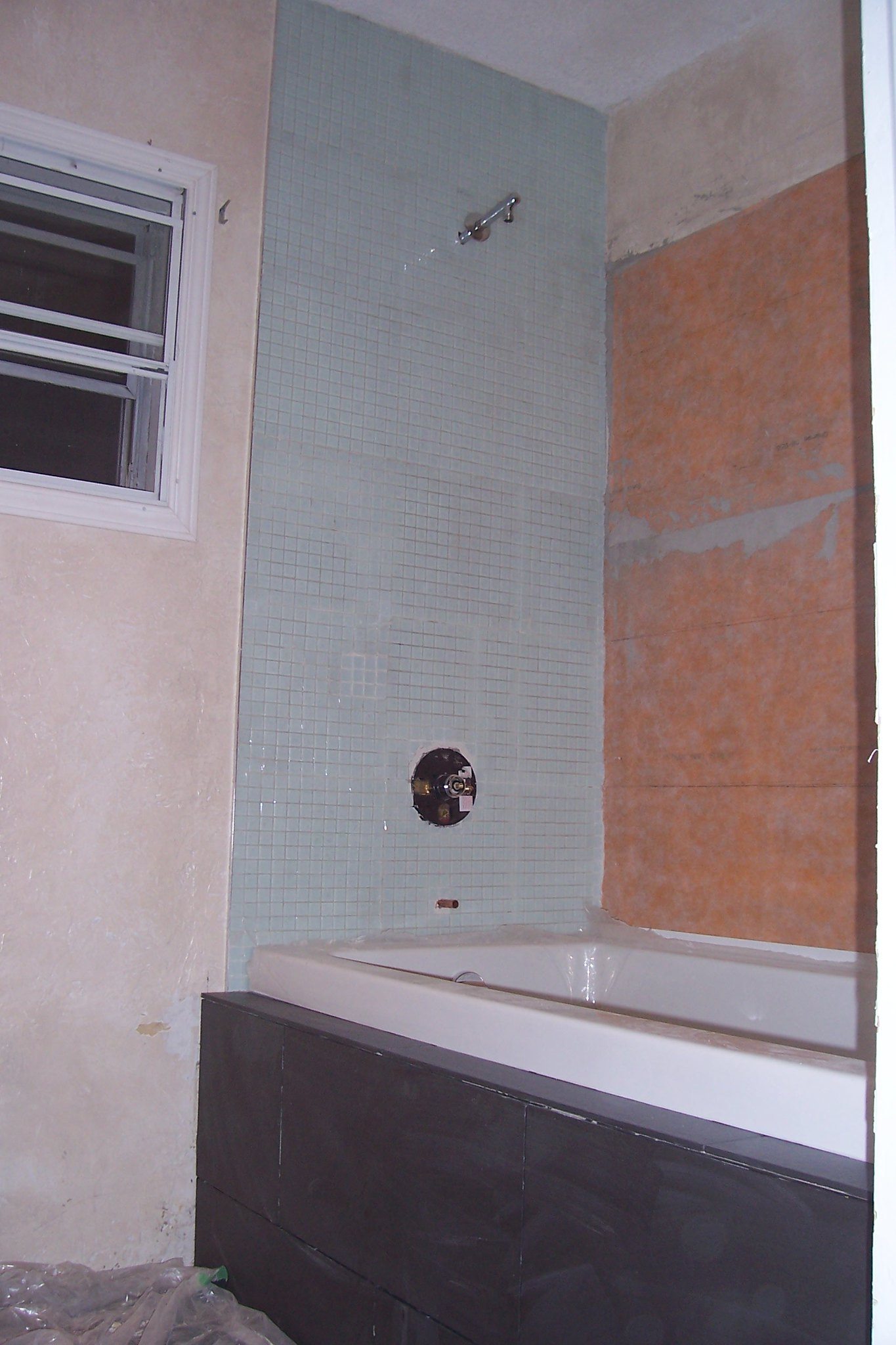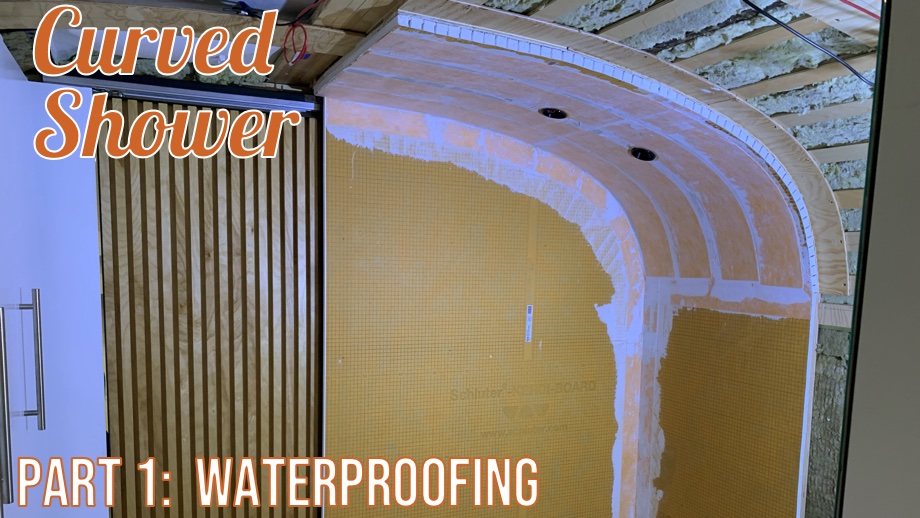Can kerdi be used over plywood? If you’re planning a bathroom or kitchen renovation and wondering whether it’s safe to use kerdi over plywood, you’ve come to the right place! In this article, we’ll explore the compatibility of kerdi with plywood and provide you with all the information you need to make an informed decision. So let’s dive in and find out if kerdi and plywood are a match made in renovation heaven!
But first, let’s quickly talk about what kerdi is. Kerdi is a waterproofing membrane that’s commonly used in tile installations, especially in areas prone to water exposure, like showers or bathroom floors. Its main purpose is to protect the underlying structure from moisture damage and prevent leaks. Now, let’s get back to the burning question: can kerdi be used over plywood?
The short answer is yes! Kerdi can be used over plywood, but there are some important considerations to keep in mind. We’ll discuss the potential challenges and solutions, so you can ensure a successful installation without compromising the integrity of your project. So, whether you’re a DIY enthusiast or a professional contractor, stick around to discover everything you need to know about using kerdi over plywood. Let’s get started!
- Clean and prepare the plywood surface.
- Apply an unmodified thin-set mortar to the plywood.
- Embed the Kerdi membrane into the mortar.
- Smooth out any wrinkles or bubbles.
- Seal the seams and corners with Kerdi-Band.
Ensure proper installation to protect your tile and create a durable, waterproof surface.

Can Kerdi Be Used Over Plywood?
Plywood is a commonly used building material in construction projects, known for its strength and versatility. However, when it comes to installing tile or other waterproofing materials in wet areas such as bathrooms and showers, special precautions need to be taken to ensure a long-lasting and watertight installation. This is where Kerdi, a popular waterproofing membrane, comes into play. In this article, we will explore whether Kerdi can be used over plywood and the best practices for doing so.
Why Choose Kerdi for Plywood Waterproofing?
Kerdi is a waterproofing membrane created by Schluter Systems, a renowned manufacturer of tile installation products. It is specifically designed to provide a reliable barrier against water infiltration. When it comes to plywood installations, using Kerdi offers several benefits:
1. Waterproofing Protection: The primary advantage of using Kerdi on plywood is its ability to effectively waterproof the surface. This is crucial in wet areas to prevent moisture buildup, which can lead to mold, mildew, and damage to the underlying structure.
2. Flexibility: Kerdi is a flexible membrane that can accommodate the natural movement of wood, such as expansion and contraction, without compromising its waterproofing capabilities. This makes it an ideal choice for plywood installations.
3. Easy Installation: Kerdi is relatively easy to install, even for DIY enthusiasts. It can be applied using thin-set mortar, and with proper attention to detail, the installation can yield a robust and watertight result.
The Importance of Proper Plywood Preparation
Before installing Kerdi over plywood, it is crucial to prepare the surface properly. Here are the recommended steps to ensure a successful installation:
1. Subfloor Evaluation: Begin by assessing the condition of the plywood subfloor. It should be structurally sound, free from any rot or damage, and properly installed according to local building codes.
2. Cleaning: Thoroughly clean the plywood surface, removing any dirt, grease, or debris. A clean surface will ensure proper adhesion between the plywood and the Kerdi membrane.
3. Smooth and Level: Check the plywood for any uneven areas or protrusions. Sand down any rough patches and use a leveling compound to address any imperfections, ensuring a smooth and level surface for tile installation.
4. Priming: Apply a suitable primer to the plywood subfloor before installing Kerdi. This will enhance the adhesion of the membrane and promote a more secure bond.
5. Seam Reinforcement: Reinforce the seams between plywood panels with mesh tape and a waterproofing sealant. This will prevent any potential water penetration between the plywood joints.
Steps for Installing Kerdi on Plywood
Once the plywood surface is properly prepared, you can proceed with the installation of the Kerdi waterproofing membrane. Follow these steps for a successful installation:
1. Cut and Size: Measure the dimensions of the area to be waterproofed and cut the Kerdi membrane accordingly, leaving a slight overlap at the edges and corners.
2. Apply Thin-set Mortar: Using a trowel, apply thin-set mortar to the plywood surface. Make sure to cover the entire area evenly and create a solid, smooth layer.
3. Install Kerdi Membrane: Carefully place the Kerdi membrane onto the thin-set mortar, starting from one edge and working your way across the surface. Press firmly to ensure proper adhesion and remove any air bubbles or wrinkles.
4. Secure the Edges: Use a roller or a flat trowel to firmly press the Kerdi membrane onto the plywood, paying special attention to the edges and corners. This will ensure a secure and watertight bond.
5. Seam Sealing: Apply a suitable waterproofing sealant to the seams and overlaps of the Kerdi membrane. This will further enhance its waterproofing capabilities and prevent water intrusion.
6. Tile Installation: Once the Kerdi membrane is securely in place, you can proceed with the installation of tiles or other flooring materials directly over the membrane, following the manufacturer’s instructions.
By following these steps and adhering to proper installation techniques, you can effectively use Kerdi over plywood to create a durable and waterproof surface in wet areas.
Tips for Maintaining and Extending the Lifespan of Kerdi Over Plywood
While Kerdi offers excellent waterproofing protection, it is essential to take proper care of the installation to ensure its longevity. Here are a few tips for maintaining and extending the lifespan of a Kerdi installation on plywood:
1. Regular Cleaning: Clean the surface regularly using mild soap and water to remove any dirt or grime that may accumulate over time. Avoid using aggressive cleaning agents or abrasive tools that could damage the Kerdi membrane.
2. Prompt Repairs: Address any damage or signs of wear and tear as soon as they appear. This includes cracked tiles, loose grout, or any other issues that could compromise the waterproofing integrity of the installation.
3. Avoid Heavy Impact: Take precautions to prevent heavy objects from impacting the surface directly. This can help minimize the risk of cracks or damage to the Kerdi membrane.
4. Proper Ventilation: Ensure proper ventilation in the area to minimize excessive humidity levels. Good airflow helps prevent moisture buildup, maintaining the integrity of the Kerdi installation.
By following these tips and regularly maintaining the Kerdi installation, you can ensure its long-lasting performance and enjoy a waterproof and durable surface over plywood.
Conclusion
Kerdi can indeed be successfully used over plywood to create a reliable and waterproof surface in wet areas. However, it is crucial to follow proper preparation and installation techniques to ensure its effectiveness. By evaluating and preparing the plywood surface, using a suitable primer, and installing the Kerdi membrane with care, you can achieve a long-lasting and watertight result. Remember to follow proper maintenance practices to extend the lifespan of the Kerdi installation. With the right approach, you can confidently use Kerdi over plywood for a durable and waterproof tile or flooring installation in wet areas.
Key Takeaways: Can Kerdi be Used Over Plywood?
- Yes, Kerdi can be used over plywood for waterproofing purposes.
- Before applying Kerdi, ensure that the plywood is structurally sound and free from any damage.
- It is important to use a suitable mortar to adhere the Kerdi membrane to the plywood.
- Seams and joints should be properly sealed and reinforced with Kerdi-Band to ensure a watertight installation.
- When using Kerdi over plywood, it is recommended to also install a suitable tile-backer board for added stability.
Frequently Asked Questions
Are you wondering if it’s possible to use Kerdi over plywood? Look no further. Here are the answers to some commonly asked questions about using Kerdi over plywood.
Can I install Kerdi directly over plywood?
No, it is not recommended to install Kerdi directly over plywood. Plywood is sensitive to moisture and can expand or contract, leading to potential issues with tile or stone installations. To ensure a stable and long-lasting installation, it is best to use an appropriate underlayment material, such as cement board or an uncoupling membrane, over the plywood before applying Kerdi.
The purpose of the underlayment is to provide a stable and moisture-resistant surface for the Kerdi membrane. By using an underlayment, you minimize the risk of movement or deterioration of the plywood, ensuring the integrity of your tiled surface.
What underlayment should I use before installing Kerdi?
Before installing Kerdi, it is recommended to use an appropriate underlayment material over the plywood. Options include cement board and uncoupling membranes. Cement board is a common choice and provides a stable substrate for the Kerdi membrane. It is essential to follow the manufacturer’s instructions for installing the cement board properly, ensuring a suitable base for the Kerdi application.
Uncoupling membranes are another option that helps prevent cracks and movement in the tile assembly. These membranes are designed to uncouple the tile layer from the substrate, providing additional protection against potential issues caused by plywood movement. Always consult the manufacturer’s guidelines and specifications when selecting and installing an underlayment material.
Can I use Kerdi on plywood in a wet area, such as a bathroom?
Yes, you can use Kerdi on plywood in wet areas like bathrooms. However, it is crucial to follow the recommended installation guidelines to ensure a proper and long-lasting waterproofing system. As mentioned earlier, using an appropriate underlayment material, such as cement board or an uncoupling membrane, over the plywood is essential before applying Kerdi.
This underlayment will provide the necessary stability and moisture resistance, protecting the plywood and ensuring the effectiveness of the Kerdi membrane. Remember to also follow all manufacturer recommendations for proper installation techniques to achieve optimal waterproofing in the wet area.
What are the advantages of using Kerdi over plywood?
Using Kerdi over plywood offers several advantages. First and foremost, Kerdi is a waterproofing membrane that provides reliable protection against moisture, preventing water damage and leaks that can harm the underlying structure, including plywood. By using Kerdi, you can ensure the longevity and durability of your tiled surface in wet areas like bathrooms or showers.
In addition to its waterproofing properties, Kerdi also provides crack isolation, which helps prevent cracks in the tile assembly due to movement or substrate shifts. This feature is especially valuable when installing tiles over plywood, as plywood can be susceptible to movement and expansion. With Kerdi, your tile installation will be better protected against potential issues that may arise from plywood movement.
Can I tile directly over plywood without using Kerdi?
While it is possible to tile directly over plywood, it is generally not recommended. Plywood is sensitive to moisture and can expand or contract, leading to potential issues with tile installations. Moisture can also seep through the grout joints, causing damage to the plywood over time. To ensure a stable and long-lasting tile installation, it is best to use an appropriate underlayment, such as cement board or an uncoupling membrane.
These underlayment materials provide a more suitable surface for tile installations and help protect the plywood from moisture-related problems. Additionally, using an underlayment allows for the incorporation of waterproofing membranes like Kerdi, further enhancing the durability and longevity of the tiled surface.

Summary
You might be wondering if you can use Kerdi over plywood. The answer is yes! It’s a good idea because Kerdi is waterproof and will protect your plywood from moisture. Just make sure to follow the installation instructions carefully.
By using Kerdi over plywood, you can create a watertight barrier in your shower or bathroom. This will help prevent water damage and mold growth. So go ahead and give it a try – your plywood will thank you!
